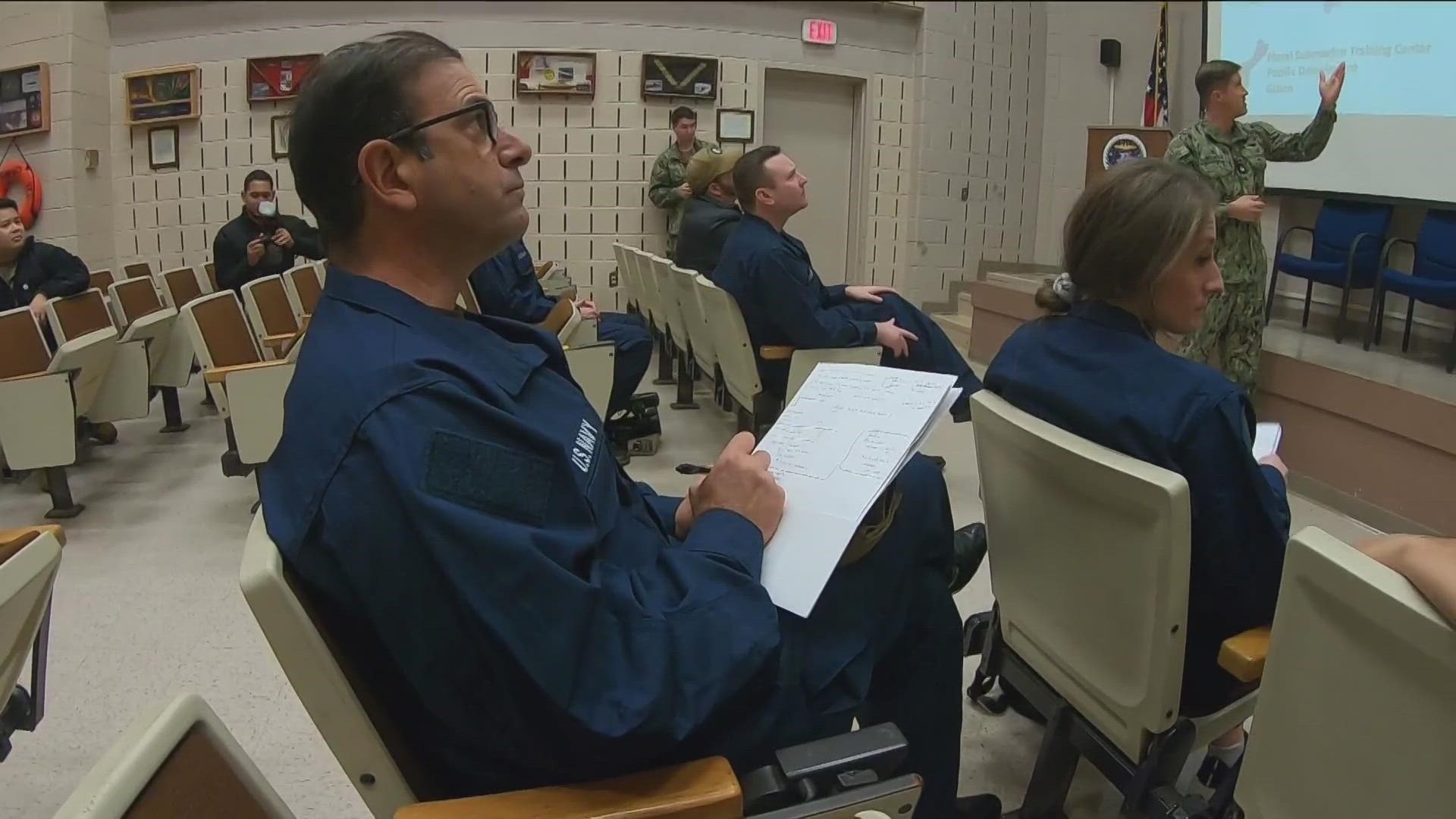SAN DIEGO — San Diego has a huge military presence, but did you know that Naval Station Norfolk, Virginia is the largest naval complex in the world?
It’s home to over 46,000 active duty sailors and 21,000 civilians. The Navy invited CBS 8 on the base to better understand the daily life of a sailor, the situations they face, and the training they get to make sure they're prepared for the worst. It’s also giving us a unique look into the life of a sailor.
It’s a job that offers adventure, purpose, and opportunities for advancement. And among those taking advantage of all the Navy has to offer are San Diegans, stationed in Norfolk, making a difference.
From Oceanside’s Sarina Espinoza to Isaiah Salcido from Chula Vista, we had a chance to hear from San Diegans about what life is really like and what they miss from home. For Isaiah, there was no hesitation.
“The food, the culture,” he said. “It's really hard finding authentic Mexican food anywhere outside of California.”
CBS 8 spent several days exploring the base, touring a submarine, aircraft carrier, and destroyer. We also rode on a helicopter and a hovercraft, but without question, the hardest part of our Sailor for a Day experience was water survival training"
This week, CBS 8 share different aspects of Navy life, but the first thing we learned is that sailors have several uniforms.
And even though they have very little space in their room, all of them are required on deployment.
The newest uniform is just starting to be seen around San Diego. It’s called 2POC. It'll be the primary at sea uniform and is both lightweight and fire resistant, which is good because Chula Vista's Pedro Silva, stationed on a submarine, says fires happen more than you think, especially in the dryers.
“I have had to fight one fire and I've been a part of - been here for at least four more,” he said.
You really do have to be ready for everything. During our flight in an MH-60 Sierra helicopter, weather made visibility tricky.
While trying to share the experience on camera, we quickly learned the helicopters are a lot louder than you realize.
By the way, if those helicopters sound familiar, it's because we have them in San Diego too. In fact they helped to fight our 2007 wildfires. They’re also regularly seen making rescues after hurricanes and other dangerous storms.
“The fact that our primary mission is rescuing people is pretty motivating,” said Operations Officer John Bice. “I enjoy the fact that people get to go home and see their families at the end of the day because we do our job.”
If you're not a fan of flying, how about gliding in a hovercraft. The Navy calls them “LCAC” for Landing craft air cushion. They can transport 500 marines at a time. “It will take marines from the ship to shore and we can do it at such a fast pace compared to other nations that we can really build up a huge force ashore very quickly,” said Lt. Michael Cassidy.
They can travel over 50 knots on water and safely hit beaches around the world that other boats can't. But what really surprised us on our quick ride was how smooth they are. Hovercraft are definitely a cool way to travel, even for those who have ridden on them several times. “Adrenaline always gets pumping no matter how many times you ride on one,” said Hull Maintenance Technician Marc Paz.
WATCH RELATED: Honor Flight | Flying our heroes to visit their national memorials (Nov. 2022).

